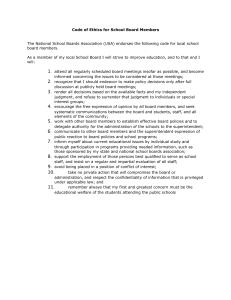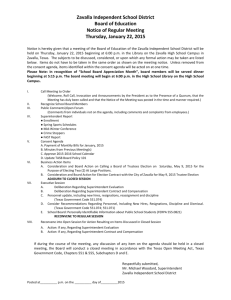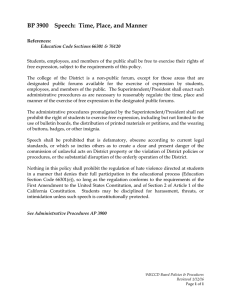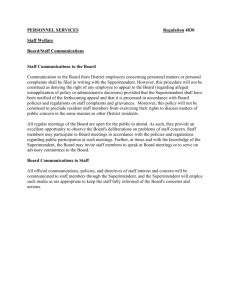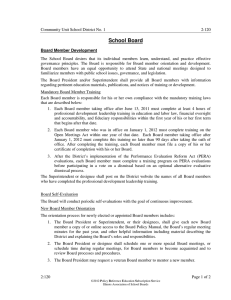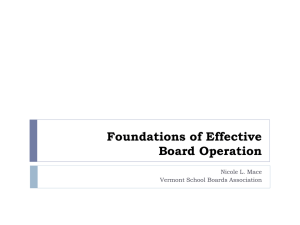Financing and Governing America's Schools
advertisement
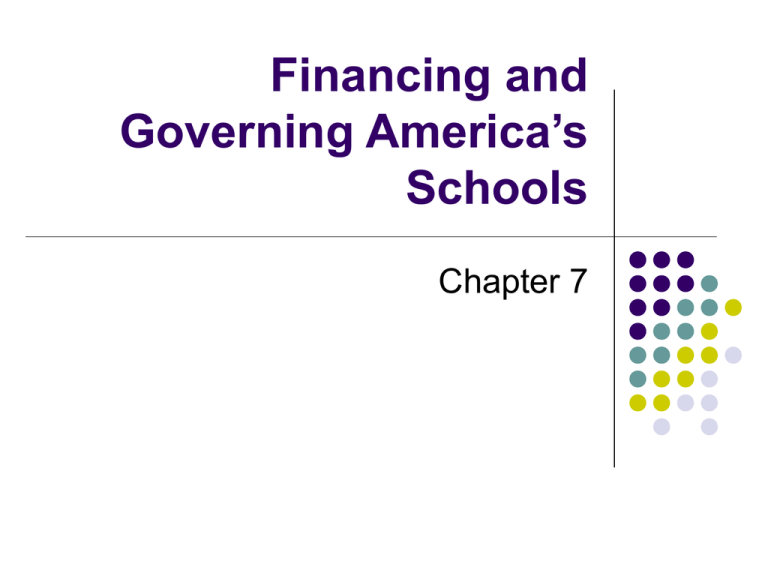
Financing and Governing America’s Schools Chapter 7 Follow the Money History of Property Tax…agrarian society, wealth determined by size of farms Property tax is now assessed on real estate, sometimes on personal property Urban school districts…limited resources, funding many more services, leading to municipal overburden Reforming Education Finance San Antonia v. Rodriguez (1973), long history of local communities funding education, court declared that education was not a “fundamental right” under the Constitution In Texas, by the mid-80s per-pupil expenditures ranged from $2, 112 to $19,333 In Edgewood v. Kirby (1989) Texas Supreme Court unanimously decided that such differences violated the Texas Constitution Reforming Education Finance In California in Serrano v. Priest (1971), decided education was a fundamental right in Califronia…which brought forth more “Robin Hood” reformers around the country Proposition 13 limited the Serrano victory The Abbott case in New Jersey (1990, 1998) changed the focus to “educational outcome” rather than “financial input” Equal education went to “efficient education, thorough education, adequate education” America tolerates inequities because: Local Control Horatio Alger…individual effort Genetics…why some succeed and others fail Culture of Poverty Flawed Studies…Coleman report Previous increases have not brought achievement gains State funding Sales tax…common revenue source, more than 40 states use it (2%-8%) Personal income tax…more than 40 states, more than 25% of state revenues State lotteries…two-thirds of the states have them Sin tax (excise taxes) on tobacco and liquor Federal Role Intrastate equity v. interstate equity…but education is not a federal fundamental right Categorical grants…specific categories and educational needs Block grants…lump sums of money with great latitude for spending (80s and 90s) money for computers not desegregation efforts The Future and School Finance Accountability Choice Programs The Economy’s Impact on School Budgets Local Fundraising Decaying Infrastructure Legal Control of Schools 10th Amendment to the Constitution makes education a state’s right State Board of Education (not MN), Chief State School Officer, State Department of Education, School Districts (local boards of education) School Superintendent and Principal Originally hired to relieve school boards of growing administrative obligations (1837) Dominant boards want functionary superintendents Factional board…political superintendent Pluralistic board… advisor superintendent Inert board…decision maker superintendent Hidden Power in Schools School secretaries Custodians Parents “helicopter parents” Businesses…educational partnerships
